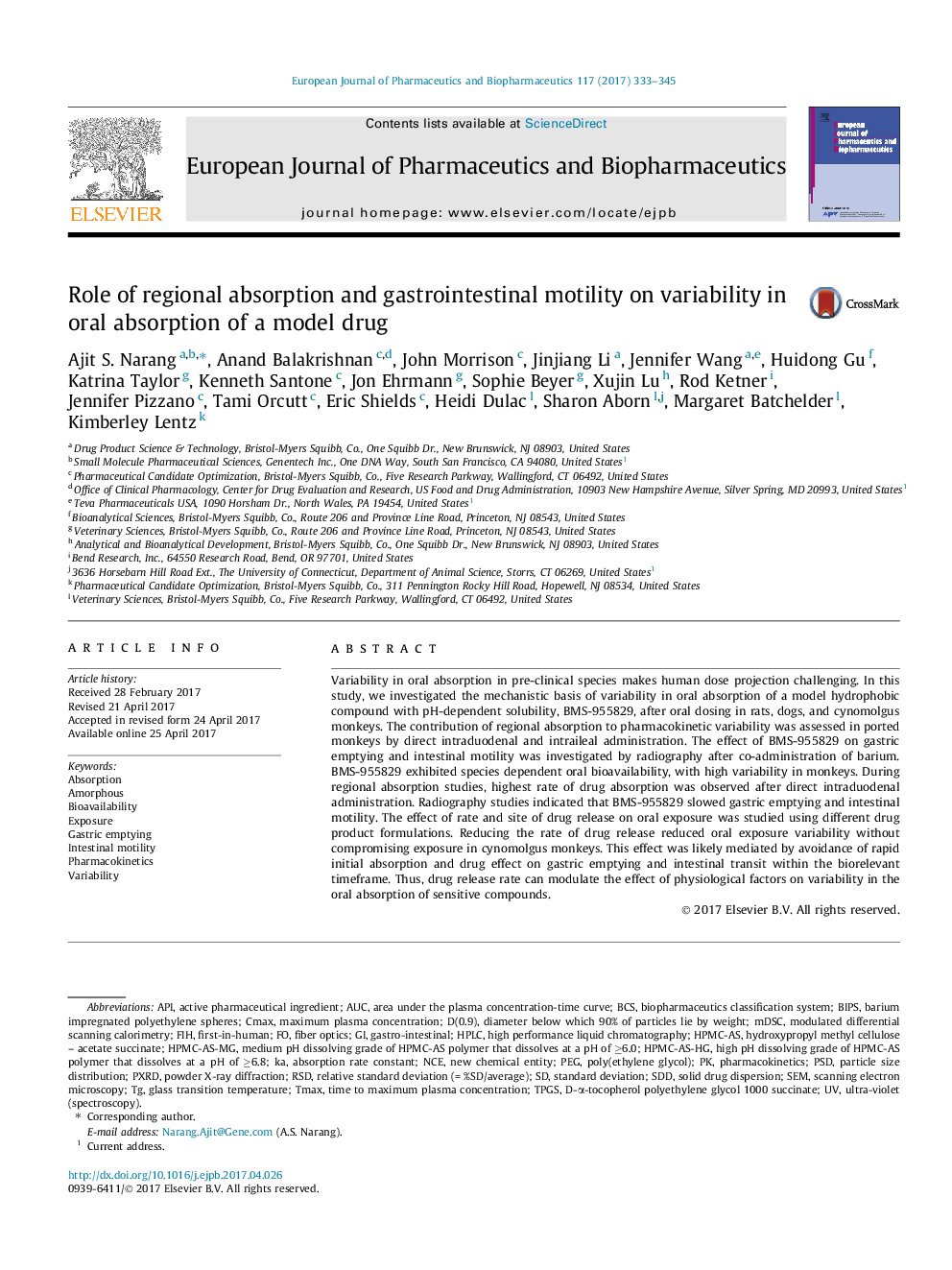| Article ID | Journal | Published Year | Pages | File Type |
|---|---|---|---|---|
| 5521524 | European Journal of Pharmaceutics and Biopharmaceutics | 2017 | 13 Pages |
Variability in oral absorption in pre-clinical species makes human dose projection challenging. In this study, we investigated the mechanistic basis of variability in oral absorption of a model hydrophobic compound with pH-dependent solubility, BMS-955829, after oral dosing in rats, dogs, and cynomolgus monkeys. The contribution of regional absorption to pharmacokinetic variability was assessed in ported monkeys by direct intraduodenal and intraileal administration. The effect of BMS-955829 on gastric emptying and intestinal motility was investigated by radiography after co-administration of barium. BMS-955829 exhibited species dependent oral bioavailability, with high variability in monkeys. During regional absorption studies, highest rate of drug absorption was observed after direct intraduodenal administration. Radiography studies indicated that BMS-955829 slowed gastric emptying and intestinal motility. The effect of rate and site of drug release on oral exposure was studied using different drug product formulations. Reducing the rate of drug release reduced oral exposure variability without compromising exposure in cynomolgus monkeys. This effect was likely mediated by avoidance of rapid initial absorption and drug effect on gastric emptying and intestinal transit within the biorelevant timeframe. Thus, drug release rate can modulate the effect of physiological factors on variability in the oral absorption of sensitive compounds.
Graphical abstractDownload high-res image (266KB)Download full-size image
